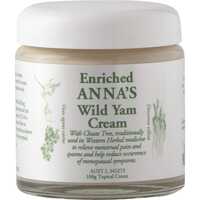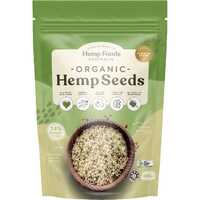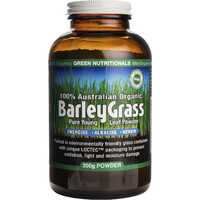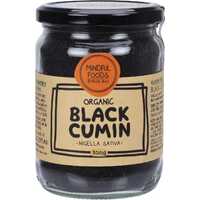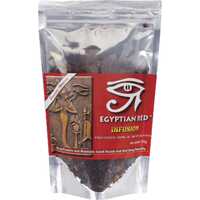Great natural food comes from all corners of the world. In this article, we'll continue our global health food tour, and this time we're heading South to Sub-Saharan Africa. This huge part of the world includes 48 countries, 1.1 billion people, and over 1,000 languages. It also includes some of the best foods on the planet, from ancient grains and drought-resistant fruits to life-affirming spice blends.
Let's take a long look at the foods of Sub-Saharan Africa. We'll look at traditional diets, review differences between regions, and list some of the healthiest African ingredients available in the Western world.
Traditional African Cuisine
Africa is a massive place with a huge diversity of cultures and foods. The traditional cuisine from this region is often called the African heritage diet, but in truth, it encompasses a number of separate diet practices. There are some common factors that define African cuisine, however, including a combination of plant-and seed-based ingredients, and an abundance of root vegetables. There are hundreds of nutritious grains, fruits, and vegetables indigenous to the African continent, with most people following a plant-based diet augmented with fish, seafood, and small amounts of red meat.
As the birthplace of humanity, the roots of African cuisine go back a very long way. While most ancient tribes followed a simple hunt-and-gather diet, there were some significant advances along the way. From Bronze Age grain cultivation in Northeast Africa to the domestication of donkeys and sheep in West Africa, specific agricultural practices changed how food was grown and consumed. Arab and Western explorers didn't know much about Sub-Saharan food until the 19th century, and they also introduced lots of modern staples like maize and potatoes.
Middle Eastern influences are strong across East Africa, including the introduction of saffron, cloves, cinnamon, and other spices. Ethiopian cuisine consists of various vegetables, meat stews, and side dishes, often accompanied by sourdough flatbread made with teff flour. With an extensive history of trade, Somali food is also full of aromatic spices and rice from the East. In recent times, food security has become a very serious issue in many East African nations, including Rwanda, Burundi, and South Sudan.
In Southern Africa, the local diet is often called 'rainbow cuisine'. This title doesn't come from the region's colourful fruits and vegetables — it describes the rich blend of indigenous, European, and Asian influences. Local foods vary a lot, but root vegetables, beans, and fermented products are common. In West Africa, most diets consist of staple grains and starchy items, which often include fish, meat, and various herbs and spices. Nuts, beans, and root vegetables are also common, with baobab and local greens also eaten in season.
Superfoods from Sub-Saharan Africa
From grains and fruits to greens and spices, the following African foods offer maximum nutritional goodness.
Ancient grains
Whole grains are a major part of most heritage diets around the world, but Africa has more than any other continent. Lots of healthy grains are consumed, from millet and teff to sorghum, barley, and multiple varieties of rice and wheat. There are also lots of wild grains and cereal crops harvested across Africa, many of which aren't eaten in the West.
While grains are a staple in most cultures, they are particularly well-suited to the dry terrain of Sub-Saharan Africa. They require much less water than other crops, and they're also more resistant to harsh weather. Whether you use them to make bread, add them to cereals, or buy them in pre-blended health foods, the following three grains are among the best:
Barley
Barley is no stranger to Western diets, but it's particularly popular in Africa. This versatile grain offers lots of fibre, manganese, selenium, copper, vitamin B1, phosphorus, and magnesium. This ancient grain has a firm texture that's great for chewing, which makes it ideal for grain-based salads and curry dishes.
Barley has a rich flavour with a delicious mild sweetness, and it works well with root vegetables and spices. Whole grain hulled and naked barley are the most nutritious options, with common pearled barley the more refined option.
Sorghum
Sorghum is another deliciously chewy grain that works great with cereals and salads. If you haven't tried this grain before, it has a texture that's very similar to couscous, and it also makes a fantastic alternative to rice. This wonderful grain is full of vitamins and minerals, including B vitamins, iron, and zinc.
Sorghum is also rich in fibre, antioxidants, and protein. Sorghum flour is great in pancakes, crepes, and waffles, and you can even prepare it like popcorn. While it can be hard to find raw, sorghum is often included in trail mixes and cereals.
Teff
If you had to mention one quintessential Sub-Saharan African grain, it would have to be teff. While tracking it down can be hard, it's used widely by Ethiopian restaurants. Teff has huge amounts of protein and iron, along with calcium, magnesium, and zinc. This tiny grain is well-suited to porridge and polenta-style dishes, and it's the main ingredient in the Ethiopian flatbread injera. More than a food, injera is used as a container to wrap other foods instead of using utensils. Teff has a soft sweetness with undertones of cocoa and hazelnut, so it's also ideal for sweet dishes.
Baobab fruit
Moving away from Africa's grains, the humble baobab fruit also plays a central role in Sub-Saharan African cuisine. Baobab fruits are often turned into baobab powder, which is extremely popular in health food circles for one very good reason — it contains roughly four times more vitamin C than oranges. Baobab is a great natural vitamin C supplement, and it works great in smoothies, shakes, and juices.
Baobab fruit is also high in antioxidants, along with important minerals like potassium and magnesium. You can also consume other parts of the baobab plant without breaking them down into powder. The leaves are rich in calcium and beneficial proteins, and the seeds and kernel are loaded with fibre, fat, calcium, and iron. The natural fibre in baobab acts as a prebiotic, which helps to boost the health of your gut microbiome.
The baobab powder market is expected to grow by leaps and bounds in the coming years, at an annual growth rate of 6.3% in Western Europe from 2019 to 2025. This nutritious food is often used as the key ingredient in natural vitamin C supplements, and it can also be found in shampoos, conditioners, and other beauty products. Whether you eat it fresh or powdered, the African baobab plant is a great addition to almost any diet.
Moringa
Moringa is a fast-growing tree that grows exceptionally well in dry conditions. Along with being found across Sub-Saharan Africa, it's also native to the Indian subcontinent. Moringa is mostly cultivated for its leaves and seed pods, which are used as vegetables in multiple dishes and taken traditionally as herbal medicine. Moringa fruits and leaves can both be consumed, and oil is often made from the seed kernels. The leaves are the most nutritious part of the plant, being jam-packed with vitamins A, B, C, and K, along with manganese, calcium, and protein.
This versatile tree has become rather popular in recent years, thanks in large part to a Zambian initiative that began around 10 years ago. After extensively studying local variants, the Moringa Initiative was set up to produce oil, tea, powder, and capsules from the plant. Moringa teas are very popular in Zambia, and oils, powders, and capsules have made their way around the world. Moringa oil has become a popular beauty product, with the healthy fatty acids and antioxidants from this plant helping to heal and rejuvenate the hair and skin.
Hibiscus
Mostly known as a flower, hibiscus is no stranger to the West. It can also be consumed, however, and has a number of beneficial health properties. From Mexican cuisine to Ayurvedic medicine and African herbal teas, this versatile plant is more than a pretty face. In Africa, hibiscus is also called zobo or bissap in the West and karkade in the North.
Dried hibiscus is often eaten raw, and it can also be processed into tea or made into powdered form. Hibiscus is a natural antioxidant, so it helps to reduce oxidative stress when combined with a healthy diet and lifestyle. Hibiscus tea is also a great source of vitamin C, and it tastes absolutely delicious.
Spice blends
While most popular spices are universal, African cuisine is full of unique spice combinations. Popular spices from Africa include garlic, ginger, cumin, cinnamon, paprika, and chilli, and they're often enjoyed together in carefully measured spice blends. The life-affirming properties of these spices are well-known — building your immune system, improving your cholesterol levels, and improving your gut microbiome, among other benefits.
Mitmita is an Ethiopian blend consisting of cloves, cardamom, cumin, ginger, cinnamon, and chilli. Berbere is another Ethiopian spice blend that contains chilli, garlic, cumin, ginger, coriander, cinnamon, and fenugreek. Many popular blends originate above the Sahara but are enjoyed across Africa, including Duqqa from Egypt, Ras el hanout from Morocco, and Za'atar from the Middle East. While many African dishes have seemingly bland or simple ingredients, the addition of spices transforms them into some of the most nuanced and delicious foods in the world.
If you're looking for healthy natural ingredients from across the world, look no further than Healthy Being. We have raw organic plant materials, vitamin- and mineral-rich powders, and delicious healthy snacks full of natural goodness. So check out our website today and enjoy free shipping options across Australia and worldwide delivery!


 Certified Organic
Certified Organic Vegan Friendly
Vegan Friendly  Vegetarian
Vegetarian Organic Ingredients
Organic Ingredients Dairy Free
Dairy Free Gluten Free
Gluten Free Keto Friendly
Keto Friendly

















